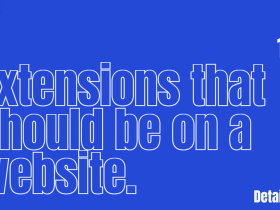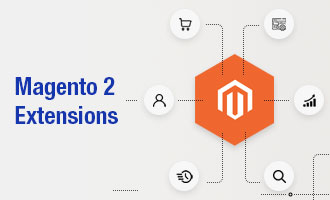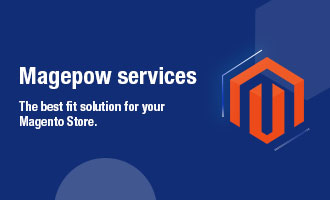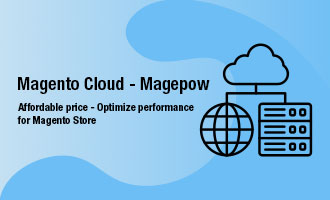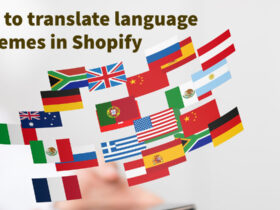Contents
Whenever looking for a new e-commerce platform, most businesses make Shopify and Magento the two platforms they first consider. That applies both to businesses launching brand new websites and to businesses transitioning from one platform to another. Shopify Plus and Magento 2 Commerce are versions of each platform aimed at mid to large-sized businesses or those with ambitions to become an eCommerce business.
This guide presents an overview of each platform, comparing Shopify Plus vs Magento 2 Commerce and the most common situations faced by businesses between the two platforms, and showcases how Shopify Plus and Magento Commerce will be processed to suit each case.
Introducing Shopify Plus & Magento 2 Commerce
When a business chooses an e-commerce platform for its website, either the solution will either succeed, or it will lead to failure for that business because there are so few guidelines on how to go about it. choose the right platform. For that reason, this guide is designed to solve the problem by giving advice on choosing between two of the most popular enterprise-grade platforms in the UK at the moment: Magento 2 Commerce and Shopify Plus.
Magento 2 Commerce is an Enterprise version of Magento, a popular e-commerce platform long acquired by Adobe in 2018.
Shopify Plus is a Pro version of Shopify, a publicly listed e-commerce platform company headquartered in Canada that started with serving small retailers and growing up.
While Magento 2 Commerce (formerly Magento Enterprise Edition) is growing strongly and is the hegemon across the west, Shopify Plus is also in the process of growing and gradually gaining popularity alongside a strong presence in the US and Canada . Magento 1 was an extremely successful platform and then gave way to Magento 2 in 2015. The transition between Magento 1 and Magento 2 was essentially a convertible rebuild, which meant many retailers. Magento 1 platforms are evaluating whether Magento 2 is really the most sensible next step. Furthermore, Magento 2, especially the Magento Commerce Cloud (hosted option) is off to an extremely strong start, which more influences the platform’s adoption rate in the market. Thanks in part to this, Shopify Plus has gained popularity in the market with more and more businesses offering apps on the platform.
Shopify continues to innovate and is continually versioning announcements. The accumulation of these features has created a balance for some retailers, keeping them away from those who like Magento.
When choosing Magento, you will have to decide between a service where data is stored and self-hosted while Shopify Plus offers full storage. Magento was later acquired by Adobe and this has a negative or positive impact on businesses is still a mystery.
Take a look at the retailer’s considerations below to decide which platform best suits your own requirements. Instead of a full set of comparisons, we selected the top 6 questions that retailers were most concerned with.
- Cost (Construction, storage, and permit)
- Agent community / development partner
- Sell offline & online
- internationalize
- Feature flexibility
- The way to the future
Consideration 1: Cost
In general, ‘The total cost of ownership of a website built on Shopify Plus tends to be cheaper than a website built on Magento 2 Commerce. For businesses that are at a lower stage of revenue, Shopify Plus would be a better choice. The cost for each platform is divided into 3 main parts: Construction, maintenance, and licensing
Construction cost: Shopify Plus vs Magento 2 Commerce
Shopify Plus build projects tend to be cheaper than Magento Commerce builds. This is especially true of the North American market, where Shopify is still little-known among e-commerce activists.
One main reason Shopify Plus builds are cheaper is that they tend to involve less backend development (databases, complex functionality, etc.) and less integration than the ones. Magento Commerce. As a result, the number of hours required to build a website is significantly reduced
.
Most enterprise-level development agencies charge by the hour. Hence, by shortening the construction process, the total cost of construction can often be much cheaper. (This can usually happen even if the average hourly rate for a Shopify Plus dealer can be higher than for a Magento Commerce outlet).
Raw construction costs
Roughly speaking and depending on the exact functional requirements decided between you and the agent, This is the cost of a website building or rebuilding project: Magento 2 Commerce: $ 150- $ 500k . (The amounts tend to be numerically similar across most currencies, for example in the UK, £ 150-500k and in the EU € 150-500k)
Shopify Plus: For a Shopify Plus build that costs over $ 100k. (<£ 100k in UK, <€ 100k in EU).
Magento 2 Commerce – Third party Hosting
If it is important for you to have a relationship with a hosting specialist (some retailers prefer this, because of its flexibility and full control) then you can opt into Magento Commerce. Your hosting company will then bill separately, usually monthly. The average Magento Commerce retailer can get paid around $ 1,000 per month. For small to medium-sized retailers, Magento Commerce and self-hosting will cost a similar overall amount to choose for Magento Commerce Cloud. In general, the larger a website, the cheaper it will cost to host by using a third-party Magento hosting provider, instead of opting into Magento Commerce Cloud.
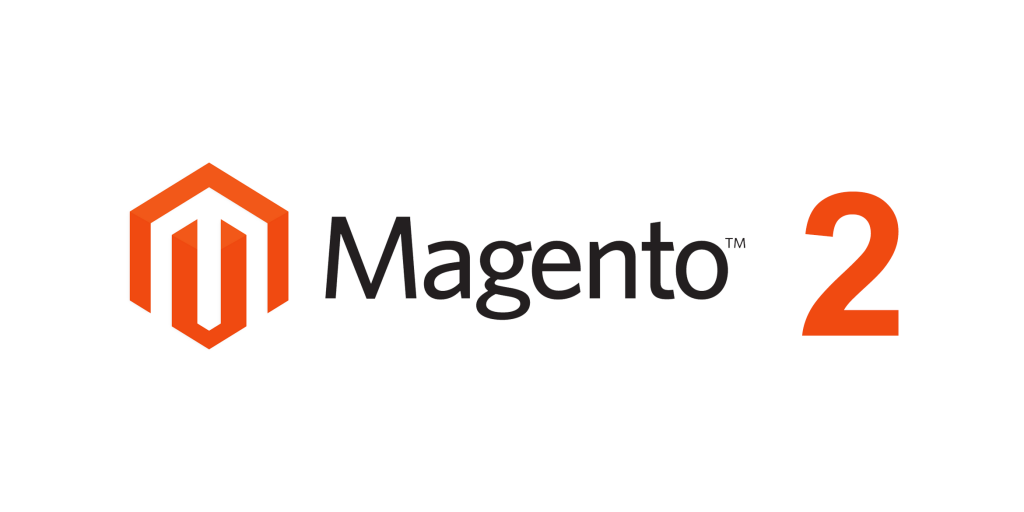
Consideration 2: Reseller / developer partner
At the time of writing, the number of businesses you have to choose from varies significantly between Shopify and Magento.
Shopify has a total of 60 Shopify Plus partners worldwide. (12 in England, 4 of them in London)
Magento has 256 Solution Partners. (44 in the UK, 11 of them are experts at Magento Commerce Cloud).
This of course reflects Magento’s longer history in the world market. (Canada is probably the exception because it is considered Shopify’s home town.)
If you want you can choose from a wide range of businesses to compare approach, launch times, pricing, and if you can be based in the UK, then you should choose Magento Commerce as your business solution. business.
“Community” is an extremely important phrase for Magento and there have been many regular Magento meetings held. These happen all over the world, especially in the US and UK. Shopify Plus meetings are also growing with high frequency in the UK, and both platforms gain a foothold.
Consideration 3: Selling online & offline
Shopify Plus offers offline payments called omni channel capabilities that are included in the total monthly cost. This is thanks to Shopify POS (‘Point of Sale’ solution), which integrates with Shopify’s own card reader, as well as a range of receipt printers, cash drawers, and an all-in-one sales system. . Shopify also recently announced a series of improvements to this, including the ability to exchange online and in-store exchanges, and to introduce a solution for managing inventory across multiple locations, with be it a store or warehouse (previously, only one inventory location was possible, which meant established retailers had to use more of the third-party tools than to process the stock directly. inventory through Shopify). These changes are a big step forward for ‘endless aisle’ (the concept of allowing in-store retailers to access your online inventory through kiosks), but the exact date when All of these features released are yet to be confirmed.
For retailers looking to synchronize offline and online sales, Magento has 2 options:
The first option is to go with MOM (Magento Order Management) with an annual license starting at $ 36k (a huge payout especially for smaller retailers).
The second Magento option is a third party extension. There are a few of these available, and one of them is the popular Ebizmarts POS app. The monthly rate is significantly cheaper than Magento order management, but you’ll need to make sure the app and API are updated regularly and the orders processed on the app need to be returned on the same iPad. . You will also be charged per iPad so if you are a retailer with more than a few stores, the cost will increase.
In short, no platform can fully tackle the offline / online situation. Major retailers will likely use integration with their own or other third-party systems. When Shopify’s multi-location tool works, this potentially helps to balance the benefits of Shopify Plus, especially since it already includes license fees unlike MOM’s, but beware that Scrolling function can always be delayed.
Consideration 4: International retail market
In terms of product maintenance, historically this has always been much easier for Magento because Magento has a multi-store functionality meaning there are multiple stores that can be managed from the same administrator, for example: one the product is located at a French store, a German store and an Italian store, but the e-commerce manager can control each product independently where needed, possibly the product description , size or price. Likewise, you can make changes globally without having to update them one by one. Multi-store is not yet in Shopify Plus and so is still a huge benefit of Magento 2 over the competition.
However, Shopify also announced at Unite this summer that some of the local currencies will eventually roll out this year. Until now, customers could see prices in their own currency using a currency converter, but in the end they still had to transact in the store’s base currency, which could be confusing. It is not correctly interpreted and certainly not what the customer is actually paying because they depend on the bank’s exchange rate. Only 9 currencies will be rolled out later this year, so if your top conversion country doesn’t fall on this list then you can still wait a while.
Thanks to Magento’s multi-store capabilities, local currencies can be retrieved with ease, as long as there is one store per currency. Despite Shopify’s recent announcement we are still recommending Magento 2 as it is experimental, available and not limited to currency selection.

Consideration 5: Flexibility
Flexibility is an area where Magento Commerce has succeeded and Shopify Plus is still lacking. If your business operates within an average ecommerce website then Shopify Plus might be enough for you. On the other hand, if you have specific requirements around product attributes or advertising options, Magento Commerce is the most affordable option.
Example: The Cambridge Satchel Company is a UK-based business that currently uses Shopify Plus. Their main product attributes are color, size and price and they have an inventory of only a few hundred products.
Shopify Plus allows customers to showcase those basic products, take photos and product features. It also allows for some extra features like personal initialization, etc.
Design Bestseller is a German-based business that sells around 80,000 skus across a wide range of products, in a variety of colors, materials and with a wide range of product options. Each category is organized differently per unit of product type
Magento allows customers to define different product types with different attributes including other options such as buying specific products in small / medium / large sizes versus others by length due to customers choose to the correct millimeter and more.
Here is a simple example comparing two retailers but illustrates a trend of expanding into other areas: The wider or closer your product set is, the more ‘unique’ the features that the door will have. Your products need to take into account that Magento Commerce will potentially be more relevant than Shopify.
Consideration 6: The way to the future
One of the most important considerations when choosing an e-commerce platform is the future path of the business and the platform itself. Shopify Plus licenses tend to have no long-term constraints, while Magento Commerce’s licensing terms can last for one year, but can also last up to 5-7 years. With this in mind, it is extremely important to be aware of one’s condition.
Shopify Plus vs Magento 2 Commerce
It’s hard to say that no platform will do everything you need without developer time or included in license fees. Above are 8 criteria we often hear retailers argue, but there are many others, including visual sales, CMS capabilities, B2B and shipping options.
To decide between the two platforms, it would be helpful to make in-depth listings of functional requirements and use several MoSCoW methods (Must-Have, Should Yes, Can Have and Not) to prioritize needs your own business.
If you have multiple inventory locations, multiple integrations with other systems, our ambitious plans for international expansion then it’s likely that Magento 2 Commerce will suit you best. If you have to have sophisticated reporting then your product suite is very simple and budget and time are the real constraints. Shopify Plus will be very relevant and will still expand according to your needs, especially as more features are rolled out making it a more affordable bright contender than the Magento 2.
Each business is unique. Making informed decisions about which platform to choose is not a straightforward process, but through this tutorial, we strive to provide core guidance in 8 key areas to help you make your choice. Choose it on the basis of where your business is currently and how you plan to do it.




